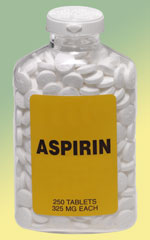
Rosiglitazone in MRCP
Rosiglitazone is one of the popular drugs commonly asked in MRCP Part 1. It is an anti-diabetic drug and a member of thiazolidinediones group.
The mechanism of action of rosiglitazone is through activation of the intracellular receptor class of the peroxisome proliferator-activated receptors (PPARs), specifically PPARγ. Rosiglitazone is a selective ligand of PPARγ and has no PPARα-binding action.
For MRCP, side effects of Rosiglitazone is a popular topic to be asked. Just remember these side effects,
1) Higher incidence of fracture
There is a greater incidence of fractures of the upper arms, hands and feet in female diabetics given rosiglitazone compared with those given metformin or glyburide.The information was based on data from the ADOPT trial.
2) Higher incidence of Cardiovascular event?
It was a great debate about this a few years back. I think if you are given 2 options- fracture or CVS event, choose fracture because no one will disagree with you!
3) Macular Odema
A possible side effect.
Remember, Rosiglitazone should not be used in patients with overt heart failure!




 1) it has central and peripheral anticholinergic effects
1) it has central and peripheral anticholinergic effects

